Are you ready to transform your home into a thriving green sanctuary? Dive into ‘The Ultimate Guide to Indoor Plant Care: 20 Essential Tips’ and unlock the secrets to creating a vibrant, healthy indoor garden that enhances your well-being. Whether you’re a seasoned plant parent or just starting your green journey, this series is your go-to resource for all things houseplants.
Indoor plants not only add beauty and color to your living space, but they also offer numerous health benefits. From purifying the air to boosting your mental well-being, the presence of indoor plants can make a significant difference in your overall quality of life. With the right care and attention, you can create a lush, inviting oasis right in your own home.
Within this comprehensive guide, you’ll find 20 essential tips for successful indoor plant care. We’ll cover everything from choosing the right plants to advanced care techniques. You’ll learn how to create the optimal environment for your plants, deal with common pests and diseases, and even incorporate technology into your plant care routine. Whether you’re a busy homeowner or a plant enthusiast looking to expand your knowledge, our guide will provide you with the insights and expertise you need to maintain healthy, thriving plants.
Join us at TrustedHouseplantGuide.com and embark on a journey to greener, happier living. Let’s get started on transforming your home into a flourishing indoor garden that brings joy and wellness to your everyday life.
Key Takeaways:
- Indoor plant care is essential for creating a healthy and vibrant indoor garden.
- Indoor plants offer numerous health benefits and contribute to your overall well-being.
- Choosing the right plants based on lighting, water, and humidity requirements is crucial for their success.
- Regular maintenance tasks such as watering, fertilizing, pruning, and repotting are essential for plant health.
- Advanced care techniques like plant propagation can help you expand your indoor garden.
Introduction
Welcome to the world of indoor gardening! Taking care of indoor plants is not only a rewarding hobby but also a way to beautify your living space and create a healthier environment. In this comprehensive guide, we will explore the art of indoor plant care, providing you with the essential knowledge and tips to ensure your plants thrive.
Indoor plants have gained immense popularity due to their ability to purify the air, improve mental well-being, and add a touch of nature to our homes. Whether you are a beginner or an experienced indoor gardener, this guide will equip you with the necessary insights to successfully nurture and maintain your indoor plants.
Indoor plant care encompasses various aspects, from choosing the right plants for your space to creating a suitable environment, mastering watering techniques, and addressing potential challenges such as pests and diseases. By understanding the fundamentals of plant care, you can create a thriving indoor garden that brings beauty and tranquility to your life.
So, let’s dive into the world of indoor plant care and discover the joys of indoor gardening!
The Essentials of Indoor Plant Care
Choosing the Right Plants
When it comes to indoor plant care, choosing the right plants is crucial for success. Consider factors such as lighting conditions, available space, and the amount of care you are willing to provide. Matching the plant’s needs with your specific environment will ensure a healthy and thriving indoor garden. For beginners or those with a busy lifestyle, low-maintenance houseplants like ZZ plants, snake plants, or pothos are great options. For a detailed guide on selecting the perfect plants for beginners, check out our article on the ’10 Best Indoor Plants for Beginners: A Guide to Easy-Care Houseplants.
Also remember to consider the members of your household. If you have pets be sure to check on the safety of the plants you choose for them as well. For an introduction on pet safety and plants check out one of our articles here on Pet Safe Plants.
The Importance of Proper Lighting
Proper lighting is essential for the health and growth of indoor plants. Different plants have varying light requirements, so it’s crucial to understand their specific needs. Some plants thrive in bright, direct sunlight, while others prefer indirect or low light conditions. You can provide adequate lighting by placing your plants near windows or using artificial lighting options like grow lights. Ensure that your plants receive the right amount and quality of light to promote optimal growth. For a more detailed look into how to properly evaluate and regulate lighting check out our article:
Lighting the Way: A Beginner’s Guide to Perfect Indoor Plant Lighting
Watering Wisdom
Watering indoor plants can be a bit tricky, as overwatering or underwatering can harm their health. The key is to find a balance and water your plants appropriately. Check the moisture level of the soil regularly and water your plants when the top inch of soil feels dry to the touch. Avoid letting your plants sit in standing water, as it can lead to root rot. Additionally, consider using room temperature water and well-draining pots to prevent waterlogging and promote healthy root growth. Fof more detailed watering information check out our article on Watering Wisely.
The Role of Humidity
Humidity levels play a significant role in the well-being of indoor plants. Different plants have different humidity preferences, so it’s important to understand and meet their requirements. Some plants thrive in high humidity environments, while others prefer lower humidity levels. To increase humidity, you can mist your plants, place them on a tray of water, or use a humidifier. Conversely, if the air is too humid, you can improve ventilation or use a dehumidifier. Keep in mind that air conditioning and heating systems can affect humidity, so monitor and adjust accordingly.
Plant Health and Maintenance
Ensuring the health and maintenance of your indoor plants is crucial to their overall well-being and longevity. By focusing on key aspects such as soil and repotting, fertilizing, pruning and grooming, and pest control, you can create an optimal environment for your plants to thrive.
Soil and Repotting
Choosing the right soil mix is essential for providing the necessary nutrients and drainage for your indoor plants. Opt for a well-draining potting mix specifically formulated for indoor plants. When it comes to repotting, observe the signs of pot-bound plants, such as root growth coming out of drainage holes or a significant decrease in growth. Repotting allows for fresh soil and ample room for root expansion, promoting healthy growth.
Fertilizing Your Plants
Indoor plants rely on regular fertilization to receive essential nutrients. There are various types of fertilizers available, including liquid, granular, and slow-release options. Follow the instructions on the product packaging to determine the appropriate amount and frequency of fertilization for your specific plants. Be cautious not to overfertilize, as this can lead to nutrient burn or other adverse effects. For a natural alternative, consider organic fertilizers or homemade compost.
Pruning and Grooming
Pruning is a vital maintenance task that helps shape indoor plants, promotes air circulation, and prevents disease. Use clean and sharp pruning shears to remove dead or dying leaves, stems, or branches. Prune back leggy growth to promote bushier growth and maintain the overall shape of the plant. Additionally, grooming your plants by removing brown or yellow leaves and wiping dust off their leaves helps keep them healthy and visually appealing.
Dealing with Pests and Diseases
Unfortunately, indoor plants can be susceptible to pests and diseases. Common pests include aphids, spider mites, and mealybugs, while diseases such as root rot and powdery mildew can also occur. Regularly inspect your plants for signs of pests or diseases, such as sticky residues, yellowing leaves, or wilting. To prevent infestations, maintain good plant hygiene, isolate affected plants, and consider natural remedies like neem oil or insecticidal soap. If the problem persists, consult a professional or your local plant nursery for appropriate pest control measures.
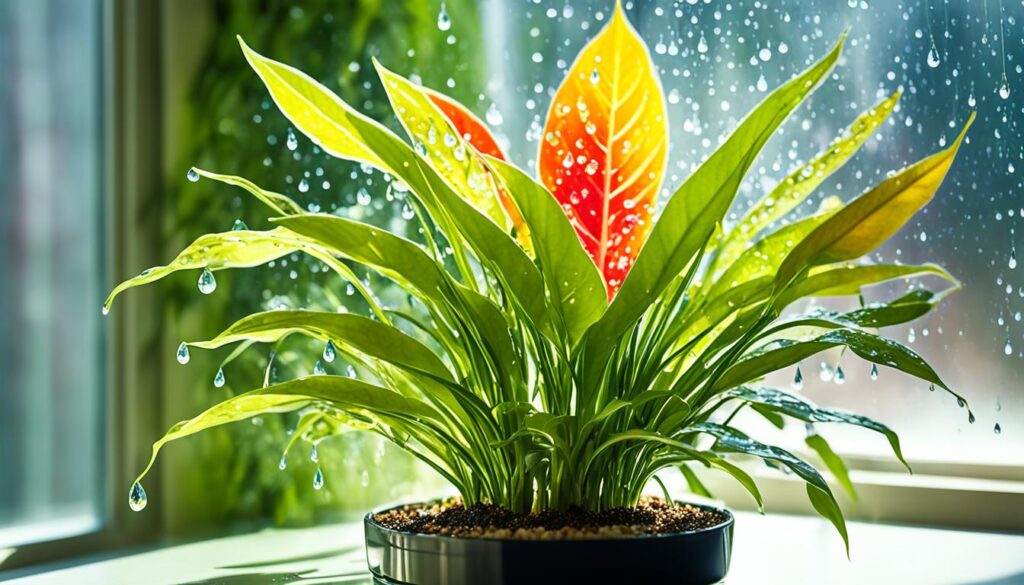
.table_default th {
background-color: #f2f2f2;
border: 1px solid #dddddd;
text-align: left;
padding: 8px;
}
.table_default td {
border: 1px solid #dddddd;
text-align: left;
padding: 8px;
}
| Common Indoor Plant Pests | Common Plant Diseases |
|---|---|
| Aphids | Powdery Mildew |
| Spider Mites | Root Rot |
| Mealybugs | Leaf Spot |
Advanced Care Techniques
Once you have mastered the basics of indoor plant care, you can explore advanced techniques to further enhance your plant’s health and growth. One such technique is plant propagation, which allows you to create new plants from existing ones. Propagation is not only a rewarding experience for plant enthusiasts but also a cost-effective way to expand your indoor plant collection.
To propagate indoor plants, there are several methods you can choose from:
- Stem Cuttings: Cut a section of the plant’s stem, typically near a leaf node, and place it in a rooting medium to develop roots.
- Leaf Cuttings: Take a leaf or a section of a leaf and place it in a suitable medium until roots begin to form.
- Division: Divide mature plants with multiple stems into separate plants by carefully separating the root system.
- Air Layering: Encourage roots to develop on a stem still attached to the parent plant by making a small incision in the stem and surrounding it with a rooting medium.
Each propagation method has its own set of requirements, and it’s important to research and follow proper techniques for each specific plant species. Successful plant propagation not only allows you to increase your plant collection but also gives you an opportunity to share your favorite plants with friends and family.
When propagating indoor plants, it’s crucial to provide the right conditions for root development, such as appropriate humidity levels, temperature, and light. Remember to be patient and give your plant cuttings time to establish roots before transferring them to their new pots.
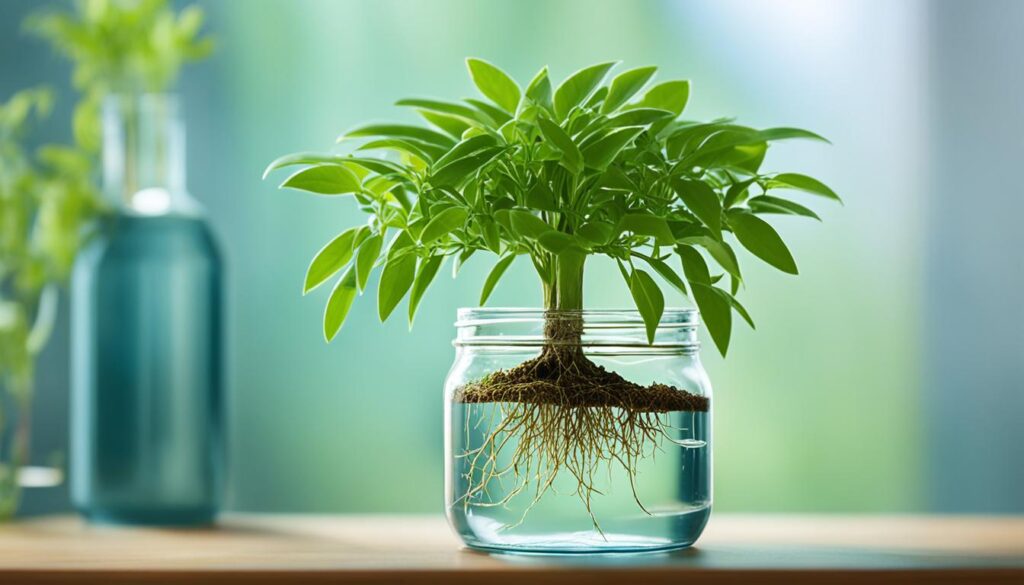
Propagating indoor plants can be a fulfilling and educational experience. It not only allows you to expand your plant collection but also gives you a deeper understanding of plant growth and development. Take the next step in your indoor gardening journey and explore the fascinating world of plant propagation.
Creating a Healthy Plant Environment
Creating a healthy environment for your indoor plants is vital to their overall well-being and longevity. In this section, we will explore three key aspects of cultivating a thriving indoor garden: air-purifying plants, plants for mental well-being, and designing with plants.
Air-Purifying Plants
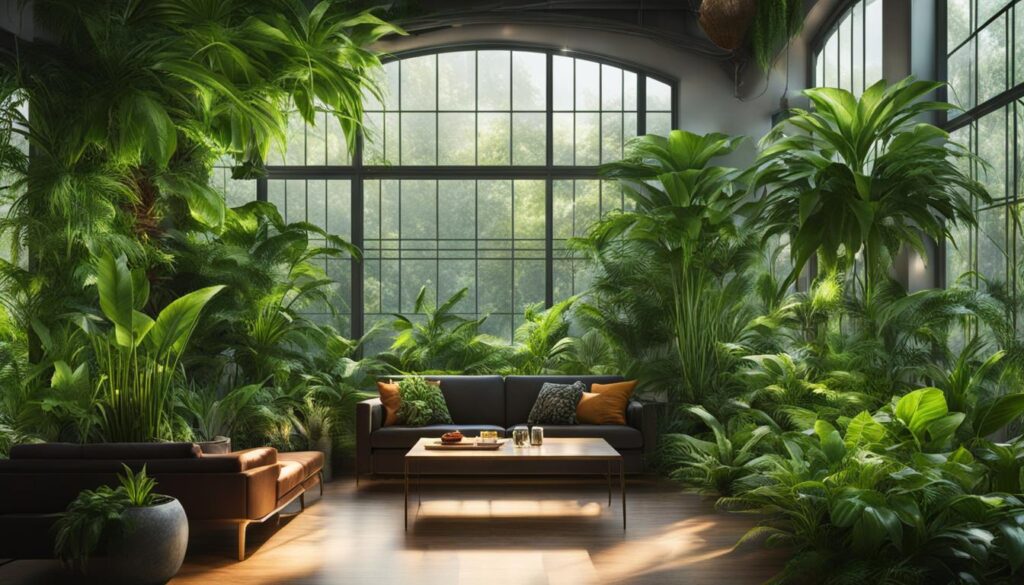
Air-purifying plants not only add beauty to your space but also have the incredible ability to purify the air around them. These plants actively filter out harmful toxins, improving the quality of the air you breathe indoors. Some popular air-purifying plants include:
- Snake Plant
- English Ivy
- Peace Lily
- Spider Plant
- Golden Pothos
By incorporating these air-purifying plants into your indoor environment, you can create a healthier and cleaner atmosphere for you and your loved ones.
Plants for Mental Well-Being
Did you know that the presence of plants can have a positive impact on your mental health and well-being? Indoor plants have been shown to reduce stress, improve mood, and increase productivity. Some plants are particularly known for their calming or mood-enhancing properties. Consider adding the following plants to your collection:
- Lavender: Known for its soothing fragrance, lavender can help promote relaxation and better sleep.
- Aloe Vera: Aloe vera has numerous benefits, including reducing anxiety and improving air quality.
- Jasmine: The delightful scent of jasmine has been linked to stress reduction and improved overall well-being.
- Rosemary: Known for its refreshing aroma, rosemary can enhance focus and cognitive performance.
- Peace Lily: In addition to purifying the air, the peace lily brings a sense of tranquility to any space.
By surrounding yourself with these plants, you can create a peaceful and serene environment that promotes mental well-being.
Designing with Plants
When it comes to interior design, plants are not just accessories but integral elements that can transform your living space. Incorporating plants into your home can add a touch of freshness, color, and style. Consider the following tips for designing with plants:
“Plants are a vibrant way to add natural beauty and texture to any room. They can be placed strategically to create focal points or used as accent pieces to complement your existing décor.”
To maximize the impact of plants in your interior design, consider the placement, choice of containers, and styling techniques. Grouping plants together can create a lush and captivating display, while using various container styles and sizes can add visual interest. Additionally, experiment with different heights and textures to create dimension in your space.
In summary, creating a healthy plant environment involves incorporating air-purifying plants, selecting plants for mental well-being, and using plants as a design element. By paying attention to these aspects, you can cultivate a thriving indoor garden that not only enhances your space but also contributes to your overall well-being.
Beyond the Basics
Now that you have a solid foundation in indoor plant care, it’s time to explore advanced techniques and sustainable practices to take your plant care to the next level.
Tech Tools for Plant Care
Technology can greatly assist in the care and monitoring of your indoor plants. There are various tech tools available, such as smart plant sensors and mobile apps, designed to help you track and optimize plant health, watering schedules, and lighting conditions. These tools provide real-time data and guidance, ensuring that your plants receive the precise care they need.
By using advanced plant care technology, you can monitor important factors like temperature, humidity, and nutrient levels to create the optimal growing environment for your plants. Whether you are a busy plant parent or a gardening enthusiast looking to refine your plant care routine, these tech tools can make a significant difference in the health and growth of your indoor garden.
Take a look at the image below to see the smart plant sensor in action:
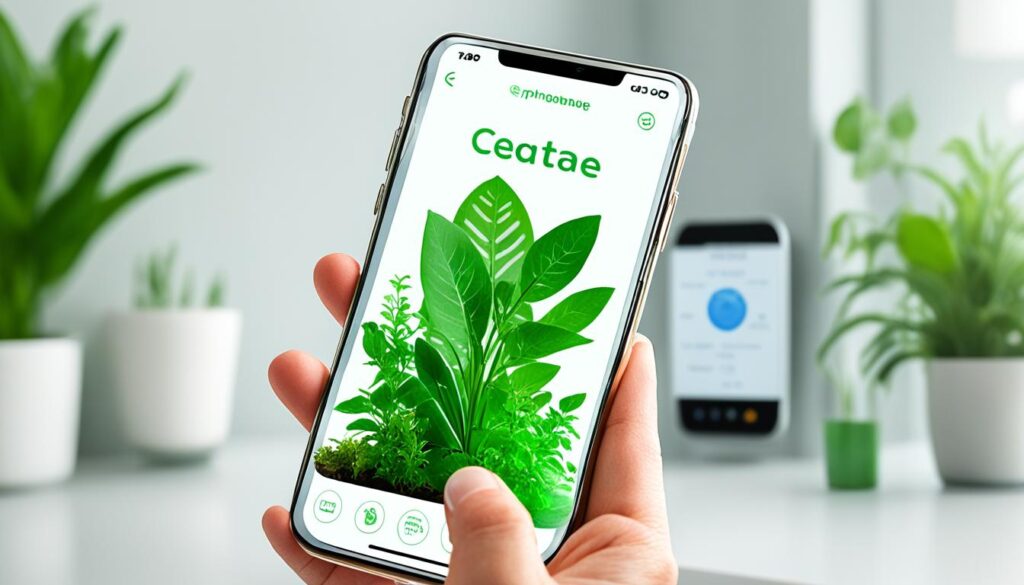
Sustainable Plant Care
In addition to utilizing technology for plant care, incorporating sustainable practices can benefit both your indoor plants and the environment. By adopting eco-friendly methods, you can reduce your environmental footprint and promote the long-term health and vitality of your plants.
When it comes to watering, consider collecting rainwater or using filtered tap water instead of purchasing bottled water. This reduces waste and ensures your plants receive pure, chemical-free hydration. You can also use organic fertilizers, compost, and homemade pest control solutions to avoid the use of harsh chemicals that may harm the environment.
By practicing sustainable plant care, you contribute to a healthier planet while maintaining a thriving indoor garden. It’s a win-win for both you and Mother Nature!
Table 7.1: Comparison of Tech Tools for Plant Care
| Tool | Features | Benefits |
|---|---|---|
| Smart Plant Sensors | – Measures temperature, humidity, light levels | – Provides real-time data to optimize plant care |
| Mobile Apps | – Offers plant care reminders | – Tracks watering and fertilizing schedules |
| Automated Watering Systems | – Controls watering frequency and duration | – Ensures consistent and optimal hydration |
For more interesting inovation in the indoor plant realm check out our article on The Latest Plant Trends.
Conclusion
After exploring the essential tips and techniques for indoor plant care, it is clear that consistent and attentive nurturing is key to maintaining a thriving indoor garden. By choosing the right plants, providing appropriate lighting, watering wisely, and creating a suitable environment, you can create a beautiful and healthy indoor oasis.
Indoor plants not only add beauty and color to your home but also offer numerous benefits such as air purification, mental well-being, and improved interior design. Incorporating advanced care techniques such as plant propagation and utilizing technology for monitoring and optimization can further enhance your plant care journey.
Remember, indoor plant care requires patience and dedication. Monitoring your plants’ health, pruning and grooming as needed, and addressing pest and disease concerns promptly are crucial components of successful plant care.
By investing time and effort into indoor plant care, you will reap the rewards of a vibrant and flourishing indoor garden. The satisfaction of seeing your plants thrive and the countless benefits they bring to your home make it a truly fulfilling and rewarding hobby.
So, whether you are a beginner or an experienced indoor gardener, take these final thoughts to heart and continue nurturing your indoor plants with care and passion. Your efforts will result in a beautiful, thriving indoor garden that enhances your living space and brings joy to your life.
Call to Action
Ready to dive deeper into the world of indoor plant care? Expand your knowledge and enhance your green thumb with these valuable resources:
– Visit IndoorPlants.com for an extensive collection of articles, guides, and tips on indoor plant care. Discover the latest trends, learn about new plant varieties, and find answers to all your plant care questions.Want more expert tips on indoor plant care? Explore our comprehensive
‘For a detailed guide on selecting the perfect plants for beginners, check out our article on the ‘10 Best Indoor Plants for Beginners: A Guide to Easy-Care Houseplants.
– Looking for comprehensive guidance on houseplant care? Check out the book “The Indoor Plant Bible” by Darryl Cheng. This practical guide covers everything from plant selection to troubleshooting common issues, making it a valuable resource for both beginners and experienced indoor gardeners.
If you prefer hands-on assistance or need professional help with your indoor plants, consider hiring a reputable plant care service. These experts can provide personalized advice, maintenance services, and even help with plant styling and design. Look for local plant care services in your area or inquire at your nearest nursery for recommendations.
FAQ
What are some low-maintenance houseplants for beginners?
Some easy-to-care-for houseplants for beginners include pothos, snake plant, spider plant, and ZZ plant.
How often should I water my indoor plants?
The watering frequency depends on factors such as the type of plant, the size of the pot, and the environmental conditions. It’s generally recommended to water when the top inch of soil feels dry.
How do I know if my indoor plants are getting enough light?
Signs of inadequate light include leggy or weak growth, pale leaves, and plants leaning towards a light source. On the other hand, if leaves are turning brown or scorched, it may indicate too much direct sunlight.
What can I do to increase humidity for my indoor plants?
You can increase humidity levels by placing a tray of water near your plants, using a humidifier, grouping plants together, or misting them regularly.
When should I repot my indoor plants?
Repotting is typically done when the plant outgrows its current pot or when the soil becomes compacted. Signs that a plant needs repotting include roots growing out of drainage holes or a decrease in growth.
How often should I fertilize my indoor plants?
Most indoor plants benefit from monthly fertilizing during the growing season. Be sure to follow package instructions and avoid overfertilizing, as it can damage the plants.
How do I prune my indoor plants?
When pruning, remove dead or yellowing leaves, trim back leggy growth, and shape the plant as desired. Use clean, sharp pruners or scissors and make cuts just above leaf nodes.
How can I prevent pests and diseases in my indoor plants?
To prevent pests and diseases, practice good hygiene by regularly cleaning leaves, inspecting plants for signs of infestation, and providing proper airflow and drainage. You can also use organic pest control methods or seek professional assistance if needed.
How do I propagate indoor plants?
There are several methods of propagation, including stem cuttings, leaf cuttings, division, and air layering. Each method has specific steps, but they generally involve taking a healthy part of the plant and encouraging it to develop roots and grow into a new plant.
What are some air-purifying indoor plants?
Some common air-purifying plants include snake plant, spider plant, peace lily, pothos, and rubber plant. These plants can help remove toxins and improve indoor air quality.
How can indoor plants benefit my mental well-being?
Indoor plants have been shown to reduce stress, improve mood, increase productivity, and boost overall well-being. They add a sense of calm and connection to nature in indoor spaces.
How can I incorporate plants into my interior design?
You can use plants as decorative elements by choosing stylish containers, arranging them in groupings of varying heights and textures, and placing them in strategic locations to enhance the overall aesthetic of your space.
What tech tools can assist with indoor plant care?
Some tech tools for plant care include smart plant sensors that monitor moisture levels, light intensity, and temperature, as well as mobile apps that provide plant care reminders and tips.
Are there sustainable practices for indoor plant care?
Yes, sustainable practices for indoor plant care include using organic fertilizers, collecting and reusing rainwater for watering, repurposing containers, and using natural pest control methods to minimize harm to the environment.
Where can I find more information on indoor plant care?
For additional resources on indoor plant care, you can visit websites dedicated to indoor gardening, read books on the topic, or seek professional plant care services for expert advice and assistance.


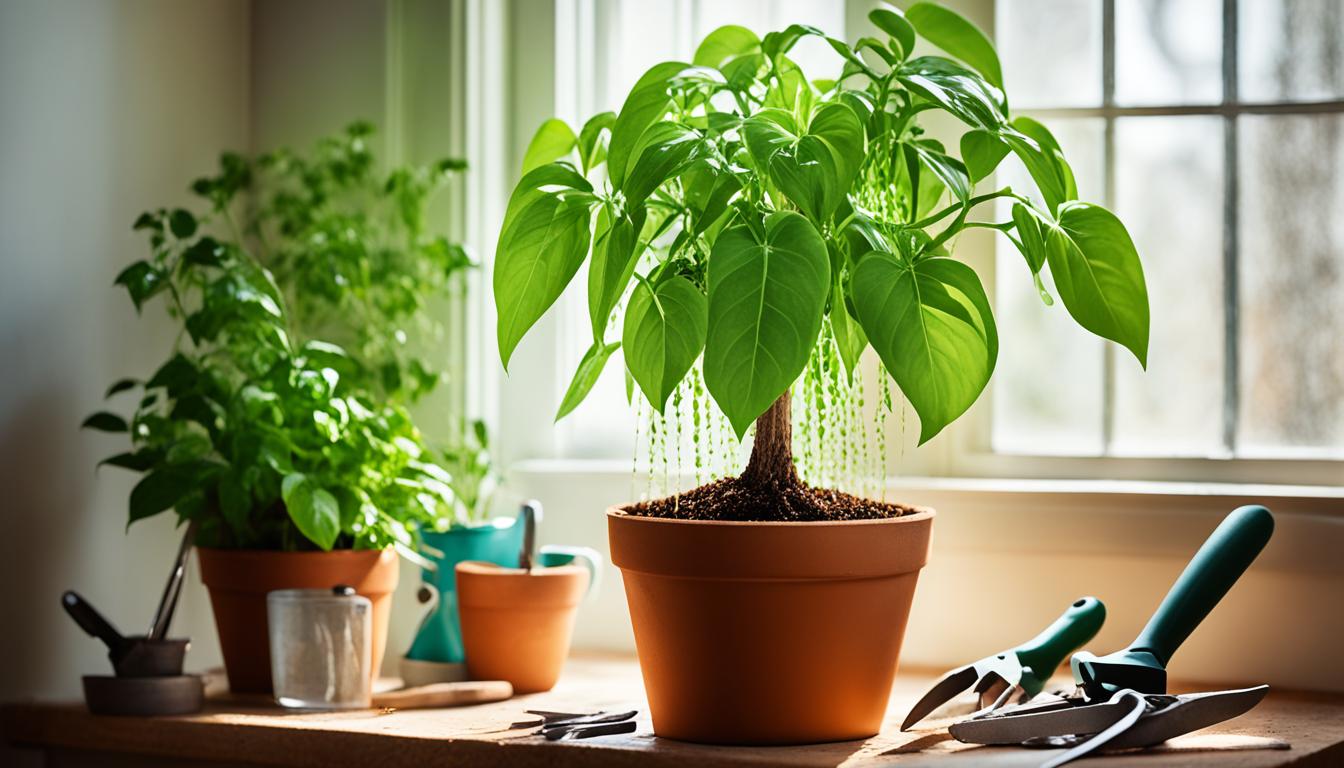

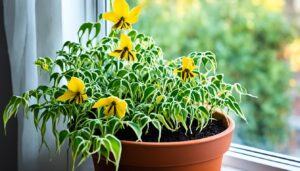
Pingback: Lighting the Way: A Beginner’s Guide to Perfect Indoor Plant Lighting – Trusted House Plant Guide
Pingback: Watering Wisely: Tips for Keeping Your Houseplants Happy and Hydrated – Trusted House Plant Guide
Pingback: Cutting Edge Care: Mastering Pruning and Cleaning for Healthier Indoor Plants – Trusted House Plant Guide
Pingback: Plant Protectors: Natural Solutions for a Bug-Free Indoor Garden – Trusted House Plant Guide
Pingback: Feeding Your Foliage: Essential Tips for Fertilizing Indoor Plants – Trusted House Plant Guide
Pingback: The Right Atmosphere: Adjusting Humidity and Temperature for Thriving Indoor Plants – Trusted House Plant Guide
Pingback: Furry Friends and Foliage: Choosing Pet-Friendly Indoor Plants – Trusted House Plant Guide
Pingback: Plant Trends to Watch: Innovations Shaping the Future of Indoor Gardening – Trusted House Plant Guide
Pingback: Growing Together: Leveraging Community and Resources for Indoor Plant Care – Trusted House Plant Guide
Pingback: Nurturing Nature: Sustainable Strategies for Indoor Plant Care – Trusted House Plant Guide
Pingback: Smart Gardening: Top Tech Tools for Effortless Indoor Plant Care – Trusted House Plant Guide
Pingback: Seasons of Growth: Adapting Your Indoor Plant Care for Each Season – Trusted House Plant Guide
Pingback: Serene Spaces: Creating a Mentally Nourishing Environment with Houseplants – Trusted House Plant Guide
Pingback: Pure Air, Pure Home: The Ultimate Guide to Air-Purifying Indoor Plants – Trusted House Plant Guide
Pingback: Exclusive Botanicals: Mastering the Care of Exotic and Unusual Houseplants – Trusted House Plant Guide
Pingback: Shiny Leaves: How to Clean Your Houseplants for Optimal Growth – Trusted House Plant Guide
Pingback: Reviving Your Aloe: A Guide to Replanting Aloe Vera – Trusted House Plant Guide
Pingback: Maximizing Plant Growth: Choosing the Ideal Windows for Your Indoor Garden – Trusted House Plant Guide
Pingback: Nature’s Touch: Transforming Your Living Space with Indoor Plants – Trusted House Plant Guide
Pingback: 10 Best Indoor Plants for Beginners: A Guide to Easy-Care Houseplants - Trusted House Plant Guide